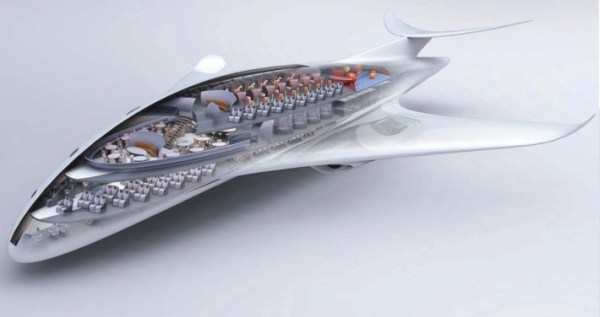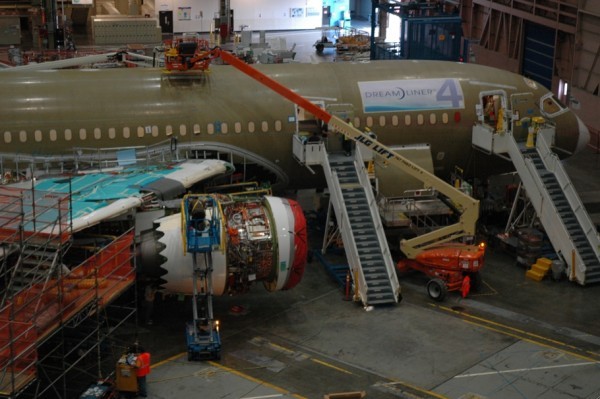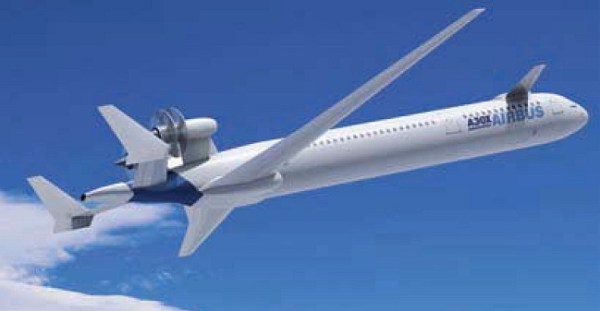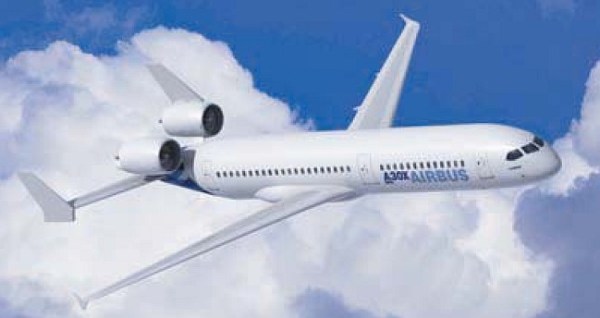
This design (above) graces the overnight update to the Airbus Global Market Forecast to 2028.
Is it a successor to the A380, already? Or intended perhaps to fill the size gap between it and the A350-1000? Or is it just a fantasy, like the original shark fin concept of how the Boeing 787 Dreamliner was (never) going to look.

There are a number of such visions of a, but not necessarily, the, future in the Airbus GMF, which art work aside, comes with few surprises and was launched with one big disappointment as far as frequent shorter haul flyers are concerned, in that John Leahy, its Chief Operating Officer Customers said there would be no new design to replace the single aisle A320 family until 2024.

But turning first to the tantalising glimpses of future shapes in the sky, Airbus was making the point that as materials technology improves, and engines evolve, it will be possible to make airliners that will slip through the air more efficiently than today’s designs.
Airliners that might blend the wing and fuselage together, or use open rotor or unducted fan technology to achieve much lower fuel consumption.
Unducted fans have been seriously contemplated in the past by Boeing and McDonnell Douglas. But there were issues with them in the 80s that seemed insuperable, and they ‘went away.’

If they come back it could be on designs like this (above) or if the ‘ducted’ or fully enclosed geared turbo fan engine or GTF proves itself, like that shown below.

Versions of these design concepts have been around for a few years, and a GTF proof-of-concept engine that has already been flight tested by Pratt & Whitney has shown initial promise and attracted strong interest by Airbus in particular which flew it in a series of recent trials mounted on the wing of an A340.
However Airbus and Boeing have also emphasised that to be applicable to their large selling single aisle jets, any radically different engine will have to not just equal but exceed by a large margin the high cycle reliability and economy of existing jet engines.
‘High cycle’ refers to shorter duration flights. The stresses made by numerous one hour flights per day on engines and airframes through a large number of take offs and landings, climbs to altitude, and cabin pressurisations, affect typical 737 and A320 operations much more than larger jets that fly at altitude for 14 hours a day between one takeoff and landing.
Getting a better and totally new type of engine onto a 737/A320 replacement isn’t however the main reason Airbus and Boeing keep putting off a replacement for their most popular short to medium range jets.
Originally, early this decade, both were talking up brand new single aisle jets for 2014. Then that looked like too much money to spend on such developments too soon when they had full order books for the existing models until after 2014, including from airlines like Southwest, which flies more than 400 Boeing 737s today, and preferred more of the same rather than something totally different.
Then Pratt & Whitney came along with the prospect of a GTF, which if it works as intended, and can be fitted to existing single aisle jets, would deliver a huge gain in operating efficiency without the need to have a completely new airframe.
Since then Airbus and Boeing have been signalling each other that sometime after 2020 sounds ‘right’, for the markets and customers of course, with maybe an interim launch of ultimate A320s and 737s with greatly improved engines.
For travellers this is disappointing. Getting on or off tightly packed single aisle jets is a pain. The promise has always been that a new replacement design will have radically different shaped cabins, ‘semi-wide body’ is the term COOC John Leahy has used, and more doors, like a metro carriage, to speed access and allow more jets to use existing gate facilities per day by reducing turnaround time.

Airbus has framed its forecast, like recent guidance from Boeing, around optimism that the global financial crisis is turning the corner, and that some blue sky is re-appearing.

It is even optimistic about higher prices for fossil carbon releasing fuels driving the technology to give advanced bio fuels, most likely based on algal grown octanes, a 30% slice of projected jet fuel demands by 2030.

This reflects the accelerating pace of non fossil carbon releasing fuel developments.
In fact there is probably reason to expect to see a fossil carbon free air transport industry become viable well before some of the ‘dream’ concepts come anywhere close to reality.








Crikey is committed to hosting lively discussions. Help us keep the conversation useful, interesting and welcoming. We aim to publish comments quickly in the interest of promoting robust conversation, but we’re a small team and we deploy filters to protect against legal risk. Occasionally your comment may be held up while we review, but we’re working as fast as we can to keep the conversation rolling.
The Crikey comment section is members-only content. Please subscribe to leave a comment.
The Crikey comment section is members-only content. Please login to leave a comment.